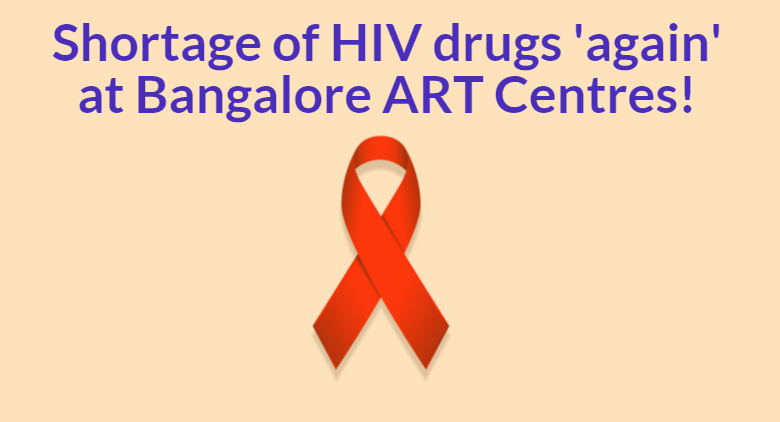
Shortage of HIV drugs ‘again’ at Bangalore ART centres !
ART centres in Bangalore are once again facing a shortage in HIV drugs, putting hundres of patients in a tough spot. A similar shortage of HIV drugs was seen earlier this year, when there was an acute shortage of Nevirapine.
Nearly 90% out of the 1 lakh population who are on ART in the state are on Nevirapine. Some patients were even forced to return without the medicine or with just a few tablets from the ART centres because of the shortage. They were also asked to return to the centre more than once a month to collect their medication. This inconvenience resulted in the discontinuation of the drug by many patients.
This problem was solved earlier with the arrival of fresh supplies of Antiretroviral Therapy (ART) drugs at various centres across the state in August, ending weeks of shortage faced by HIV patients.
Current Scenario
At present, the drug SL30 (a combination drug of Stamivudine and Lamivudine), has not been available at the state-run Bowring and Lady Curzon Hospital for quite some time.
Patients are complaining that they are given medications at a lower dose than required or have to return from the hospital empty handed. When the patients approached the authorities, they were told that the irregular supply of medication is due to the shortage of supplies.
An activist, Mr. David B who works with Sangama (a HIV human rights organization), said not only were the HIV drugs in shortage, but also paediatric drugs, drugs for opportunistic infections and those given to curb the side effects of HIV. Patients are also being asked to pay for these medicines at all hospitals except at K C General hospital. Those with BPL cards can receive the medication at half the price. Unfortunately, the price of the HIV drugs is so high that even when halved they are unaffordable to most patients.
H N Ravindra, the project director of KSAPS (Karnataka State AIDS Prevention Society) denied there was a shortage of drugs as they have an inventory management system in place which helps locate- which drug is available, the location of the drug and which patients should have access to it. A meeting has been called to discuss the shortage and how to deal with it before the situation becomes any more critical.